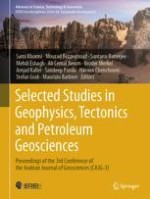This edited book is based on the best papers accepted for presentation during the 3rd Springer Conference of the Arabian Journal of Geosciences (CAJG-3). It is of interest to all researchers practicing geophysics/seismology, structural, and petroleum geology. It includes a set of research studies spanning a large spectrum of geological and geophysical topics with particular reference to Middle East, Mediterranean region, and Africa. It also presents a series of research methods that are nowadays in use for measuring, quantifying, and analyzing several geological domains. Papers cover new research studies on earthquake geodesy, seismotectonics, archeoseismology and active faulting, well logging methods, geodesy and exploration/theoretical geophysics, petroleum geochemistry, petroleum engineering, structural geology, basement architecture and potential data, tectonics and geodynamics, and thermicity, petroleum, and other georesources. The book follows a multidisciplinary approach which combined with the geodynamics of tectonic provinces and investigations of potential zones of natural resources (petroleum reservoirs) provides the basis for a more sustainability in the economic development.
